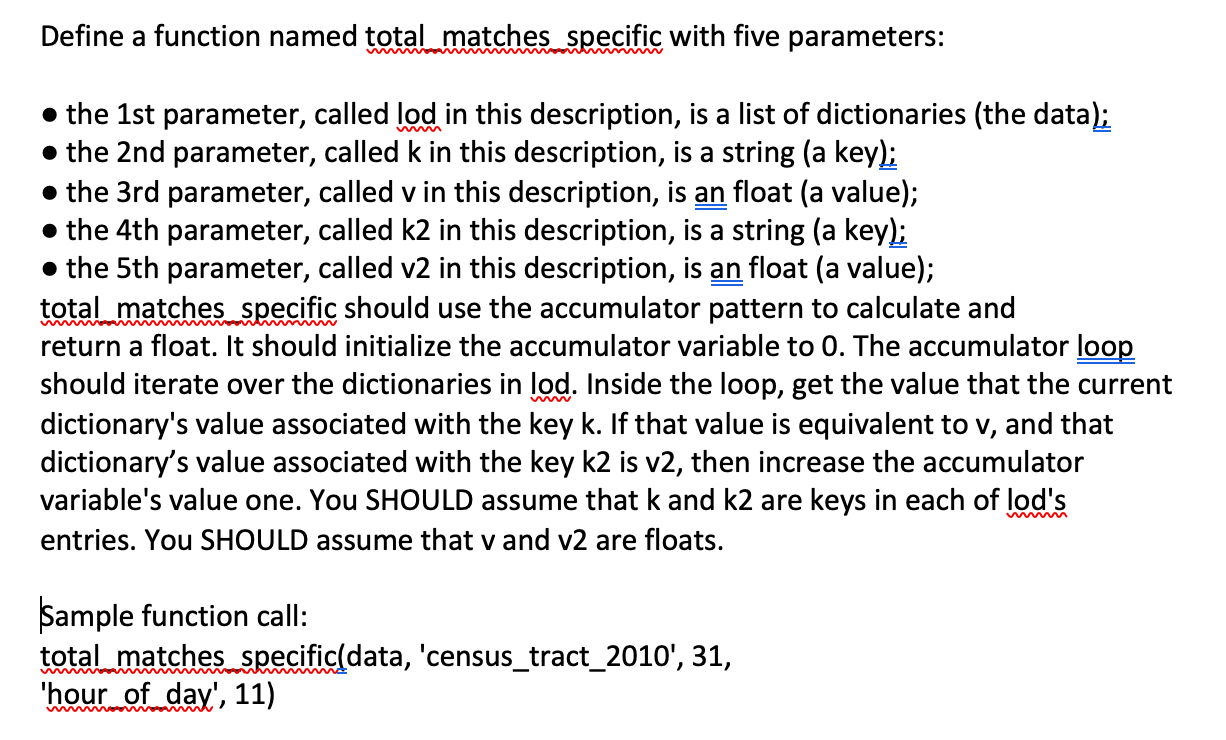Home /
Expert Answers /
Computer Science /
python-define-a-function-named-total-matches-specific-with-five-parameters-the-1st-parameter-ca-pa918
(Solved): PYTHON Define a function named total matches specific with five parameters: - the 1st parameter, ca ...

Define a function named total matches specific with five parameters: - the 1st parameter, called lod in this description, is a list of dictionaries (the data) - the 2 nd parameter, called \( k \) in this description, is a string (a key) - the 3rd parameter, called \( v \) in this description, is an float (a value); - the 4th parameter, called \( k 2 \) in this description, is a string (a key) - the 5th parameter, called \( v 2 \) in this description, is \( \underline{\underline{n}} \) float (a value); total matches specific should use the accumulator pattern to calculate and return a float. It should initialize the accumulator variable to 0 . The accumulator loop should iterate over the dictionaries in lod. Inside the loop, get the value that the current dictionary's value associated with the key \( \mathrm{k} \). If that value is equivalent to \( \mathrm{v} \), and that dictionary's value associated with the key \( k 2 \) is \( v 2 \), then increase the accumulator variable's value one. You SHOULD assume that \( k \) and \( k 2 \) are keys in each of lod's entries. You SHOULD assume that \( \mathrm{v} \) and \( \mathrm{v} 2 \) are floats. Sample function call: total matches specific(data, 'census_tract_2010', 31, 'hour of day', 11)
Expert Answer
def total_matches_specific(lod,k,v,k2,v2): matches=0.0#since